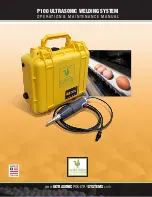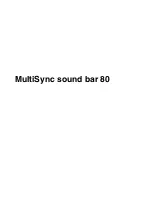
6
iMIG200DP
l) Special regulations apply in areas where
there is a potential risk of fire and/or
explosion.
m) Welds that are exposed to large stresses
and must comply with safety requirements
may only be completed by specially trained
and approved welders. Examples of such
welds include pressure vessels, rails, trailer
hitches, etc.
n) It must be noted that the protective
conductor in electrical systems of
appliances may be destroyed by the
welding current in the event of negligence,
for example if the earth terminal is placed
on the welding set casing to which the
protective conductor of the electrical
system is connected. The welding work is
completed on a machine with a protective
conductor connection. It is therefore
possible to weld on the machine without
having connected the earth terminal to it.
In this case the welding current will flow
from the earth terminal through the
protective conductor to the machine. The
high welding current may cause the
protective conductor to melt.
o) The fuses on the supply cables to the
mains sockets must comply with the
relevant regulations (VDE 0100). To
comply with these regulations, only fuses
or circuit breakers suitable for the cross-
section of the cables may be used (for
earthing contact sockets max. 16 A fuses or
16 A circuit breakers). The use of too high
a fuse may result in the cable burning and
fire damage to the building.
GENERAL POWER TOOL SAFETY WARNINGS
8. Additional Safety Instructions for
Constricted and wet areas
When working in constricted, wet or
hot areas, use insulating supports and
intermediate layers as well as slip-on
gloves made of leather or other non-
conductive materials to insulate your
body against the floor, walls,
conductive parts of the machine and
the like.
If you use small welding transformers
for welding in places with an increase
electrical risk, for example in
constricted areas with conductive
walls, (tanks, pipes, etc.), in wet areas
(which make work clothes wet) and in
hot areas (perspiration on work
clothes), the output voltage of the
welding set when idling must not
exceed 48 V (effective value).
Therefore, the appliance may not be
used for these purposes because its
output voltage is higher than this.






































